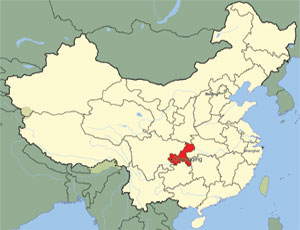Chongqing, a metropolitan area with 31 million people, took center stage at a conference that drew almost 400 construction professionals to the heartland of China. The Nov. 5 event focused on how to achieve sustainable development, a central issue for this city, which is expected to “urbanize” another 500,000 rural residents next year alone.
The city is located at the center of China, and although it is not familiar to many Westerners, it is playing a major part in the economic development of the country’s vast southwest region and the upstream range of the Yangtze River. The 2009 Chongqing International Construction Summit, co-hosted by ENR’s parent, McGraw-Hill Construction, the Chartered Institute of Building (U.K.) and Construction Times, a national construction industry newspaper in China, presented speakers on urban issues and sustainability.
Spreading across 82.4 square kilometers, Chongqing is one of four municipalities under the direct administration of China’s central government. Its GDP growth in 2009 is expected to be an impressive 16%, despite the global economic downturn.
Ling Yueming, deputy mayor of Chongqing, welcomed industry experts attending and encouraged them to help Chongqing build itself into an eco-mega city. Li Jianchun, director general of Chongqing’s Foreign Trade and Economic Relations Commission, said Chongqing is playing a leading role in the transfer of economic growth from China’s coast to its inland regions. He said the city attracted $2.7 billion in foreign investment in 2008 and may break $3 billion in investment this year. He pointed to advantages such as low-cost transportation on the Yangtze and Jialing rivers, which wind through Chongqing and then join together, and labor costs that are only 35% to 40% of those in coastal cities. Construction in the city is on a huge scale, involving 100 million square meters of construction in the next decade.
Li Shirong, deputy director of the foreign trade commission, a professor of construction management at Chongqing University and the first president of the United Kingdom-based Chartered Institute of Buildings to live outside the U.K., said that both urban and rural development are important to the region, and bringing water, wastewater, transportation and energy infrastructure to rural areas has to be coordinated with urban expansion. Stanley Yip, director of planning and development for ARUP China, said there are efforts to rationally use both urban and rural resources, to improve farmers’ income and to pilot the creation of urban farms.
Zhang Yuan, chief planner of Chongqing Urban Planning Bureau, described the city’s master plan for 2020, including its ambitious goals for infrastructure development to achieve a city that is “livable, unimpeded, green, healthy and safe.” To achieve this “unimpeded goal,” the city plans to construct a network of highways, two new runways at the airport, an inner-city rail line and expand port facilities.

VINCENT LO
Vincent Lo, chairman of Shui On Land Limited described his company’s plans for a 3.6-million-square-meter, mixed-use development that will rejuvenate an historic shipping district of Chongqing, called Hualong Qiao, on the banks of the Jialing River, close to other prospering commercial districts. The area had fallen “into decay in the 1990s,” said Lo, and Shui On signed a memo of understanding to purchase the land and began working on a master plan in 2003. The development’s master plan, by Skidmore, Owings & Merrill, includes residential, retail, commercial, entertainment and cultural sites. It includes a 468-meter-tall, 105-story office, hotel and commercial tower designed by architect Kohn, Pederson Fox and engineer Ove Arup & Partners. A highlight of the development will be Shui On’s signature feature: Chongqing Tiandi, an 84,000-sq-meter retail, leisure and entertainment center that preserves the neighborhood’s traditional architecture. Lo said the area is being designed by architect Benjamin Wood, who designed Shanghai’s popular Xintiandi.














Post a comment to this article
Report Abusive Comment